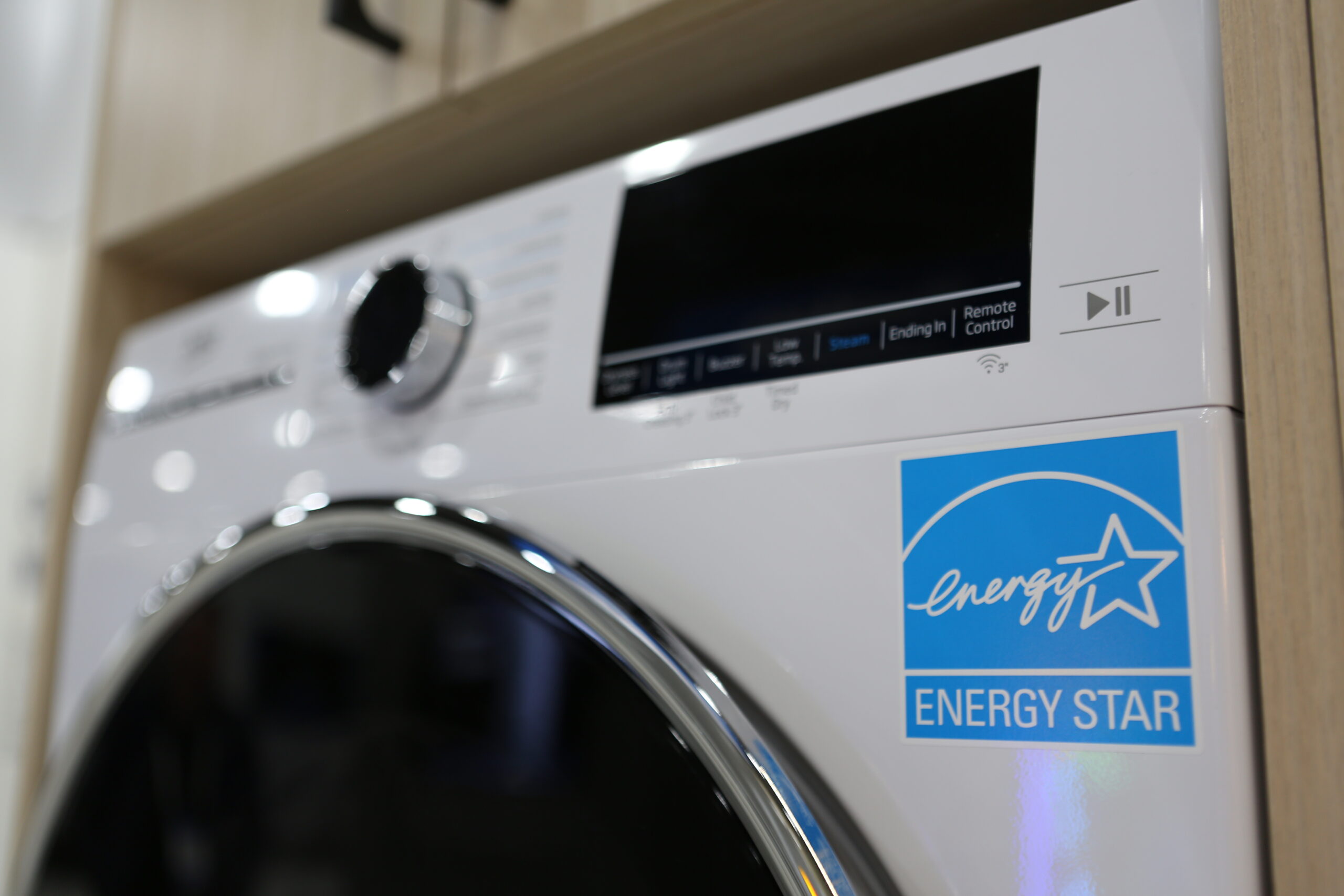The ENERGY STAR® brand was born in 1992 and, through lots of marketing, PR and energy savings stories, has become a brand with very high consumer awareness. What are some of the processes that go on behind the scenes to ensure the energy savings agenda is realized? How do home appliances fit into the picture?
The Federal Government, through the Environmental Protection Agency (EPA) and Department of Energy (DOE), has some very ambitious energy efficiency, sustainability and reduced greenhouse gas goals. To achieve those goals, a lot of things need to change at the consumer level. Sadly, almost every product that reduces energy versus the most commonly used models is more expensive to build and involves additional engineering to develop. Manufacturers like long predictable production runs; asking them to develop new, more efficient models runs counter to maximizing shareholder value.
 To get out of this dilemma, the EPA has had to use many tools at the federal and state legislative levels, the consumer level, and through manufacturer incentives to drive change. That is a lot of balls to juggle, but the one area of certainty that they can point to is that the product models that bear the ENERGY STAR label are the ones consumers should buy.
To get out of this dilemma, the EPA has had to use many tools at the federal and state legislative levels, the consumer level, and through manufacturer incentives to drive change. That is a lot of balls to juggle, but the one area of certainty that they can point to is that the product models that bear the ENERGY STAR label are the ones consumers should buy.
As progress toward electrification and energy savings has not moved at the desired pace, in August 2022, the Inflation Reduction Act (IRA) was signed into law. The state programs have many nuances, such as income limits, incentive caps, post installation verification, etc., but the one solid variable is that the products need to be ENERGY STAR certified.
Within the EPA, there is a process followed that continues to raise the bar on energy efficiency for every product they track. As a new product is being developed, the EPA is involved to determine if it meets the specifications to receive ENERGY STAR certification. If it does get certified, great, but there is likely a revision to the certification specifications coming within the next few years to where that same new product would no longer receive certification.
The EPA, at a broad portfolio level, puts its focus on product categories that offer the greatest potential for energy savings. It also looks at the replacement cycle for products and the number sold annually. The last piece of the puzzle is incentives that are offered through online rebates and retailers to drive the purchase of products that will drive the greatest reduction in energy consumption.
Home appliances are a major part of the EPA’s portfolio and have been for many years. The ENERGY STAR program has been so successful that, in some categories, like lighting, televisions and refrigeration, incremental energy savings are really hard to achieve. These products are all very efficient already. Just look at the yellow Energy Guide on a television or refrigerator. Lighting has become so energy efficient that the EPA has pulled out of almost all incentive programs for light bulbs.
Today, the focus has turned to the biggest energy-consuming products in the home-heating and cooling, plus water heating. These two items combined will typically consume 60 percent of the energy to run a household. The most predicable way to realize big these areas involves moving to heat pump technology. The same goes for clothes drying. It is not surprising that the Inflation Reduction Act (IRA) provides the greatest incentives for these products with models using heat pumps. For HVAC and water heating, heat pumps are incentivized for both the state and federal IRA programs.
The only other appliance subject to state IRA incentives is electric stoves/cooktops. This incentive was designed to encourage electrification and movement away from a gas stove. Some states will implement the program whereby only a fuel switching scenario is incentivized; others, with an installed base of mainly electric cooktops, will incentivize electric-to-electric upgrades.
The goal of this article is to give you a better sense for how the EPA and DOE work on and think about energy savings, as well as the pivotal role played by ENERGY STAR certified products. These products are well defined for all parties, including utilities, to leverage for energy savings programs like the IRA.
To see a full product catalog of ENERGY STAR certified models, reference the Product Finder on ENERGY STAR website at www.energystar.gov/productfinder/.




